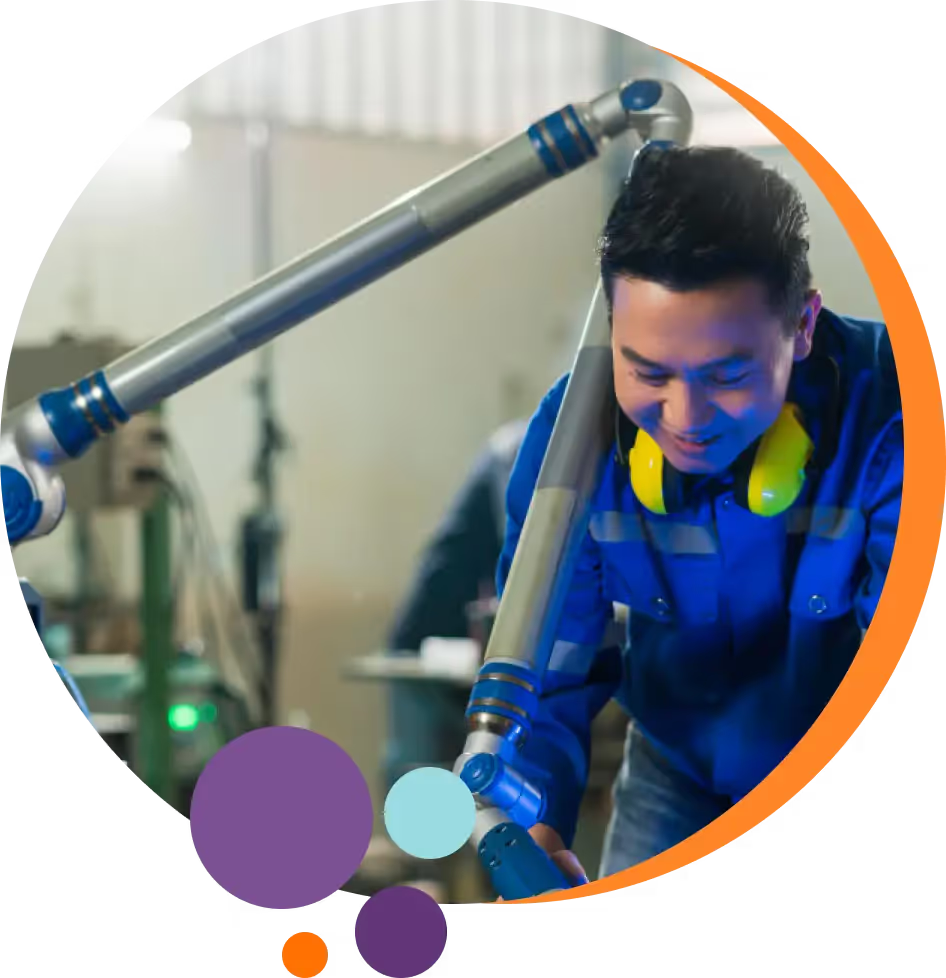Factors Influencing Apprenticeship Duration
The duration of an apprenticeship isn't random.
It's carefully determined by several key factors, and understanding these can help you decide which apprenticeship is right for you.
Industry and Occupation
Different apprenticeship industries have unique skill requirements and complexities, which directly impact apprenticeship duration.
For instance, apprenticeships in complex trades like electrical work or plumbing often require 3-5 years of training due to the extensive hands-on training involved. For instance, the Independent Electrical Contractors (IEC) offer a four-year training program.
In contrast, apprenticeships in healthcare, such as medical assisting or pharmacy technician roles, often range from 1 to 3 years.
Apprenticeship Level
The level of apprenticeship and the type of certification also play a significant role in determining the duration.
Entry-level apprenticeships typically require less time than those leading to advanced certifications or journeyman status.
According to Apprenticeship USA, the Advanced Manufacturing industry has several occupational apprenticeships, each with differing lengths.
Even basic or intermediary apprenticeships in the same occupation, such as Mechatronics Technician Engineering, can have different durations,
Prior Learning and Experience
An apprentice's background can also influence the length of an apprenticeship.
For instance:
- Those with Recognition of Prior Learning (RPL) might be able to accelerate apprenticeships.
- RPL includes relevant work experience or prior qualifications.
- Each program has its own criteria for RPL. An academic transcript may be enough to skip a subject for one, while another may value specialized online courses instead.
- Organizations usually assess you before approving a shortened apprenticeship period.
Company-Specific Programs
Some employers design custom apprenticeship programs based on the company's workforce forecast, internal training structure, and philosophy.
Technology giant Siemens offers global and local apprenticeship opportunities. The length of these programs can range from 2 to 5 years.
On the other hand, a Google Software Engineering Apprenticeship might only last 2 years.
Apprenticeship Model (Full-time vs. Part-time)
The apprenticeship model, whether it’s full-time or part-time, also affects the overall program duration.
- Full-time apprenticeships generally involve a 40-hour workweek dedicated to both on-the-job training and classroom instruction.
- Part-time apprenticeships typically take longer to complete as apprentices balance their training with other commitments. A 3-year full-time program might extend to 5-6 years when done part-time.
Country and Region
Apprenticeship durations can also differ across countries and regions due to variations in regulations, standards, and cultural norms.
Apprenticeships in some European countries may be longer and more structured compared to those in the US due to differences in educational systems and labor market practices.
What do Apprenticeships Usually Include?
While apprenticeships vary across industries and companies, they typically share common elements designed to provide a comprehensive learning experience.
Let's break down the key components.
- On-the-Job Training
The cornerstone of any apprenticeship is hands-on, practical experience.
- Shadowing Professionals: Initially, apprentices observe experienced workers to learn the ropes of the trade.
- Hands-on Work: As skills develop, apprentices take on increasingly complex tasks under supervision.
- Gaining Responsibilities: Over time, apprentices are entrusted with more independent work to mirror real job responsibilities.
Apprenticeships focus on progressive development to help candidates gradually build their skills and knowledge.
- Classroom or Theoretical Instruction
Apprenticeships include formal education to complement practical skills.
- Technical Knowledge: Classes cover industry-specific theories, principles, and best practices.
- Safety Training: Many programs emphasize workplace safety protocols, especially in trades and manufacturing.
- Soft Skills Development: Courses often include communication, teamwork, and problem-solving skills.
These may be taught via classes, workshops, or even online learning modules.
- Assessment and Evaluation
Throughout your apprenticeship, you may have regular checkpoints to ensure you’re progressing appropriately:
- Periodic Skill Assessments: These might include practical tests, written exams, or project evaluations.
- Regular performance reviews: Your mentors and supervisors will provide feedback on your progress and identify areas that need improvement.
- Competency Demonstrations: You might need to prove mastery of specific skills to advance.
- Preparing for Certification
Many apprenticeships provide industry-recognized certification. They signify you possess the skills and have met the required standards to perform a particular job effectively.
- Certification Aligned Training: Programs often include specific training to help apprentices pass certification exams.
- Mentorship Advantage: Your mentors and instructors will provide guidance and support to help you prepare for the certification exam.
- Accumulating Work Hours: Many certifications require a set number of documented work hours, which apprenticeships provide.
For example, after four years of work experience or completing a four-year apprenticeship under a licensed Professional Engineer (PE), you need to pass the Principles and Practice of Engineering Exam to receive a Professional Engineering License.
Benefits of Completing an Apprenticeship
Apprenticeships stand apart from traditional educational paths because of their unique advantages, which include practical training, financial stability, and career advancement opportunities.
National and Industry Recognition
Completing an apprenticeship often culminates in earning a nationally recognized credential and industry-specific certifications.
These credentials validate your skills across the industry and confirm that you meet the necessary standards to excel in your chosen field.
Employers also value the practical experience that comes with apprenticeships, which other applicants may lack, giving you a competitive advantage.
Career Advancement
Unlike most educational programs, apprenticeships offer a structured progression, with opportunities for advancement built into the program.
The combination of theoretical knowledge and practical skills increases your adaptability and further widens the scope of job opportunities.
Debt-Free Education
The financial advantage of apprenticeships is a key selling point.
- Earn While You Learn: Unlike traditional college programs, apprenticeships allow you to earn a wage while gaining your education.
- No Student Loan Debt: Many young Americans are saddled with huge student loan debt. Apprenticeships are in sharp contrast to this model and stand out as a burden-free option.
- Employer Investment: Many employers cover the costs of apprenticeships and related technical instruction to eliminate educational expenses.
Increased Employability
Apprenticeship graduates have a competitive edge in the job market and are highly sought after by employers.
- High Employment Rates: The US Department of Labor reports that apprentices who complete a registered apprenticeship have an average annual salary of $80,000. For comparison, the average annual salary nationwide is $59,428 — with better-earning jobs usually requiring college degrees.
- In-Demand Skills: Apprenticeships are designed in partnership with employers to ensure you learn skills that are currently in demand.
- Professional Network: Through your apprenticeship, you build relationships that can lead to future job opportunities.
Shorter vs. Longer Apprenticeships
The length of an apprenticeship can influence your career trajectory.
- Longer apprenticeships: These programs often lead to higher levels of expertise and specialization, potentially opening doors to advanced roles and higher earning potential.
- Shorter programs: These can quickly get you into the workforce and help you start building your career sooner or have faster career transitions.
Real-World Experience
Apprenticeships are about enabling you to apply skills in work situations.
They prepare you for the realities of your chosen career, including workplace culture and professional expectations.
Mastering these new skills and taking on more responsibilities helps increase an undervalued asset: your professional confidence.
Grassroots experiences, such as one-on-one guidance from experienced professionals, teach you how to talk and build relationships with those in the field.






















